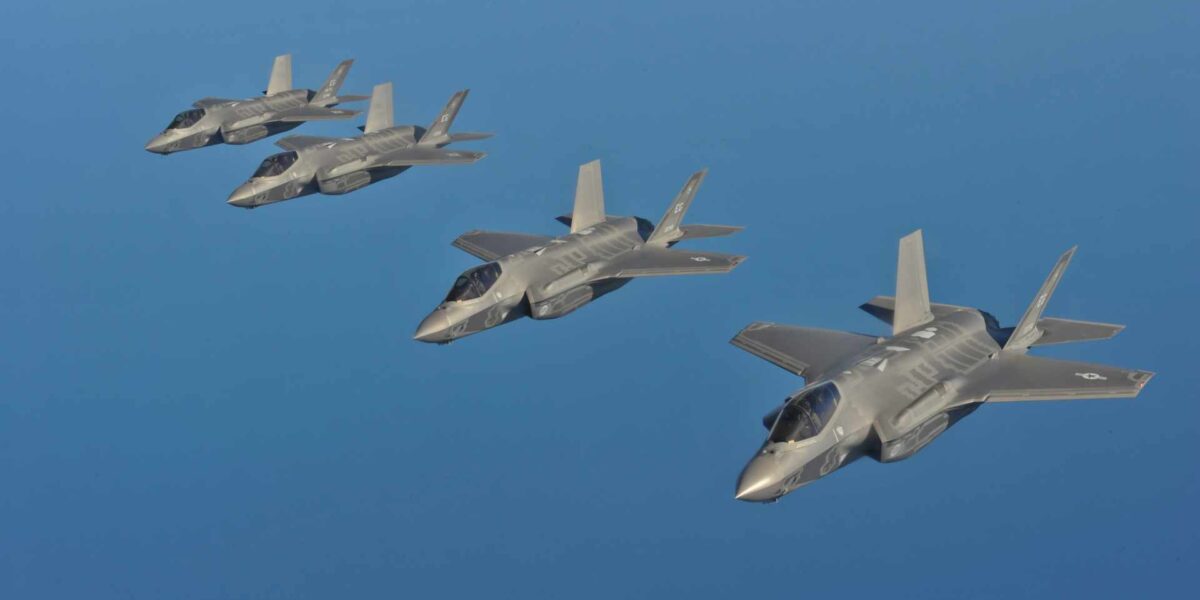Over the past two weeks there have been dozens of stories about Canada’s F-35 purchase. But the most salient point has been almost entirely ignored. Canada shouldn’t “spend tens of billions of dollars on unnecessary, dangerous, climate destroying fighter jets.”
That’s from the No New Fighter Jets for Canada statement, which was signed by Canadian musicians Neil Young, Teagan and Sarah and Sarah Harmer as well as authors Michael Ondaatje Yann Martel, Gabor Maté, David Suzuki and Naomi Klein as well as Stephen Lewis and Elizabeth May. Prominent international figures such as Daryl Hannah, Roger Waters and Noam Chomsky also backed a public letter highlighting the fighter jet’s violent nature.
“Canada’s current fleet of fighter jets has bombed Libya, Iraq, Serbia and Syria”, notes the 2021 Canadian Foreign Policy Institute and Voices of Women for Peace letter. “Many innocent people were killed directly or as a result of the destruction of civilian infrastructure and those operations prolonged conflicts and/or contributed to refugee crises.”
Four-years old the 500-word statement remains pertinent, highlighting the economic, environmental and social downsides of Canada’s second biggest ever planned procurement. At a minimum the No New Fighter Jets for Canada position deserves some media attention. But amidst dozens of stories on warplanes in recent days Andrew Mitrovica seems to be the only mainstream voice that’s mentioned the possibility of using the F-35 resources in a more socially and ecologically sustainable manner.
The Aljazeera columnist wrote, “I would forgo acquiring warplanes that, in a generation or so, will become obsolete, and spend the mountain of money improving young Canadians’ fast-fading prospects of buying a home on the not-so-distant horizon and burnishing the paltry pension that seniors receive every month.”
At a cost of $19 billion — $74 billion over their lifecycle — these weapons gobble up significant public resources. They could be used to build many light rail lines or public housing units.
Most countries don’t have fighter jets, let alone cutting-edge warplanes. Ireland hasn’t had fighter jets for two decades. Nor has Canada’s Five Eyes partner New Zealand while free trade partner Mexico doesn’t have operational fighter jets (Costa Rica, Iceland, Panama and two dozen other countries don’t have militaries).
It’s clear from the recent F-35 discussion that Canada’s fighter jet purchase has little to do with defence. The US controls the source code and upgrades for the F-35, giving the US an effective “kill switch” over the warplanes. In other words, the Royal Canadian Air Force (RCAF) leadership pushed aggressively for a warplane effectively controlled by the only country that could plausibly invade Canada.
The fighter jets are being purchased to enhance the Canadian military’s capacity to kill alongside the most violent nation the world has ever seen. Since the early 1990s the RCAF has conducted 1,600 offensive bombing missions in US-led wars.
In 1991 a dozen Canadian fighter jets participated in the bombing of Iraq. CF-18 Hornets joined US and British ships in destroying most of Iraq’s hundred plus naval vessels in what was dubbed the “Bubiyan Turkey Shoot.” Coalition bombing destroyed much of Iraq’s civilian infrastructure including electricity production, sewage treatment plants, telecommunications equipment, etc. Twenty thousand Iraqi troops and thousands of civilians were killed.
At the end of that decade Canadian fighter jets bombed Serbia for 78 days. In the last stage of the break-up of the former Yugoslavia, 18 Canadian fighter jets participated in NATO’s 78-day bombing of Serbia in the spring of 1999.The CF 18s dropped 530 bombs in 682 sorties — approximately 10 percent of NATO’s bombing runs. Hundreds died during NATO’s bombing and hundreds of thousands were displaced in a war that contravened international law.
In 2011 seven CF-18 fighter jets participated in the war on Libya and Canadian general Charles Bouchard oversaw the entire NATO operation, which dropped thousands of bombs in a bid to secure regime change in the oil-rich nation. The assault unleashed 14 years of instability and violence in Libya as well as deteriorating social and economic indicators. (Bouchard was subsequently hired by Lockheed Martin to promote Canada purchasing the F-35.)
As Donald Trump muses about the border and threatens to annex Canada, the RCAF is pushing hard to maintain its ties to the US Air Force. They want to be part of the US’ global military machine. We must restrain them. No New Fighter Jets for Canada.



